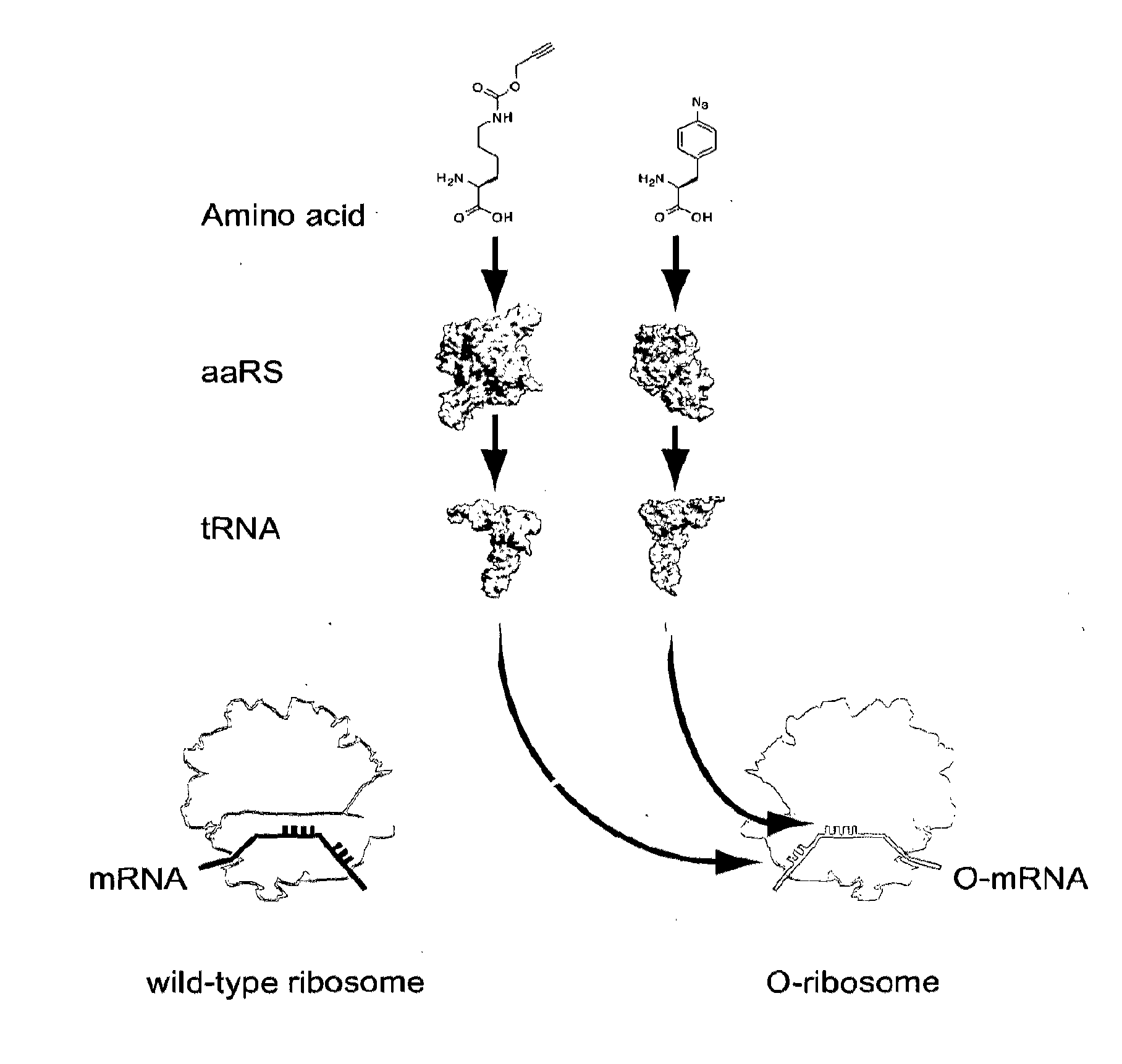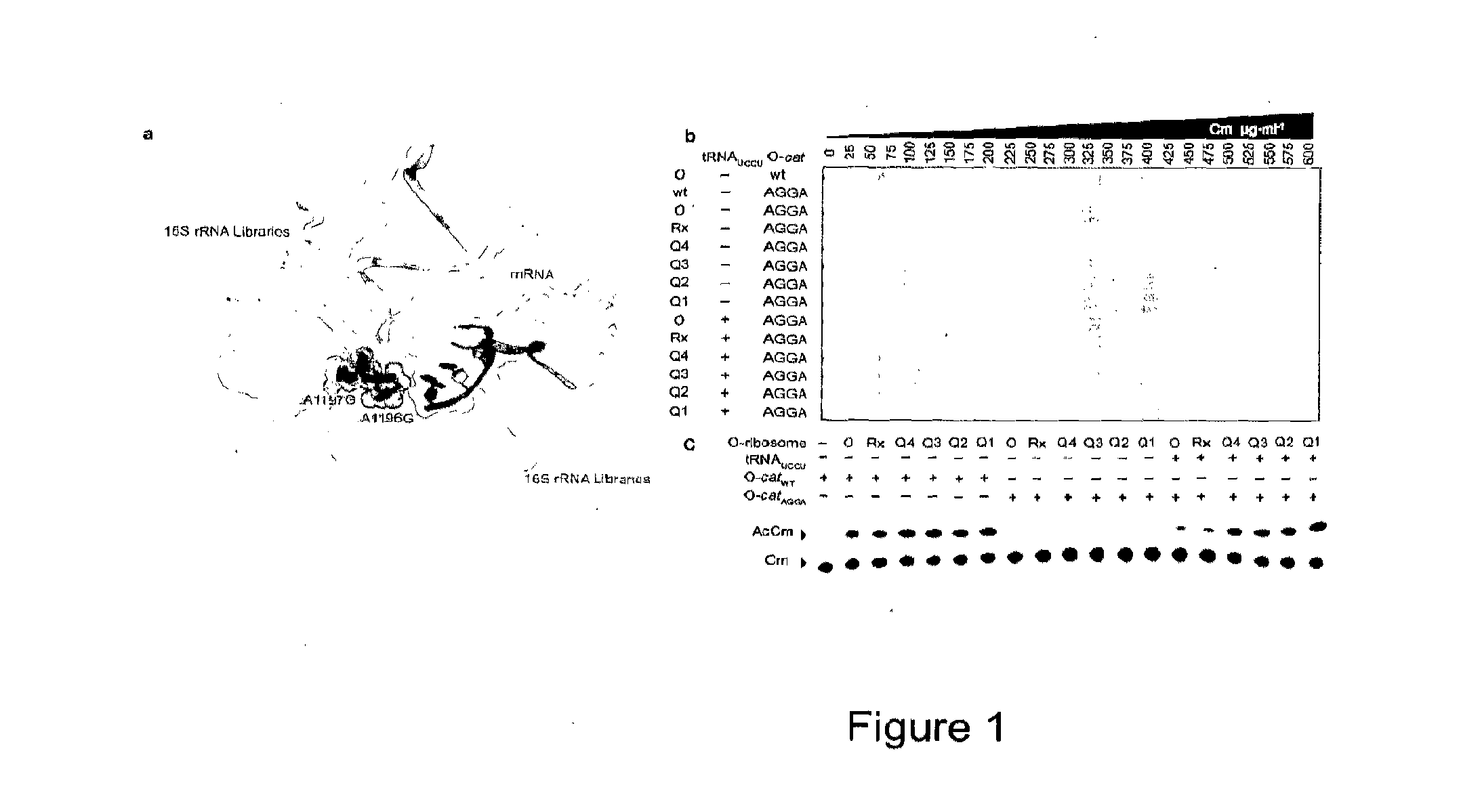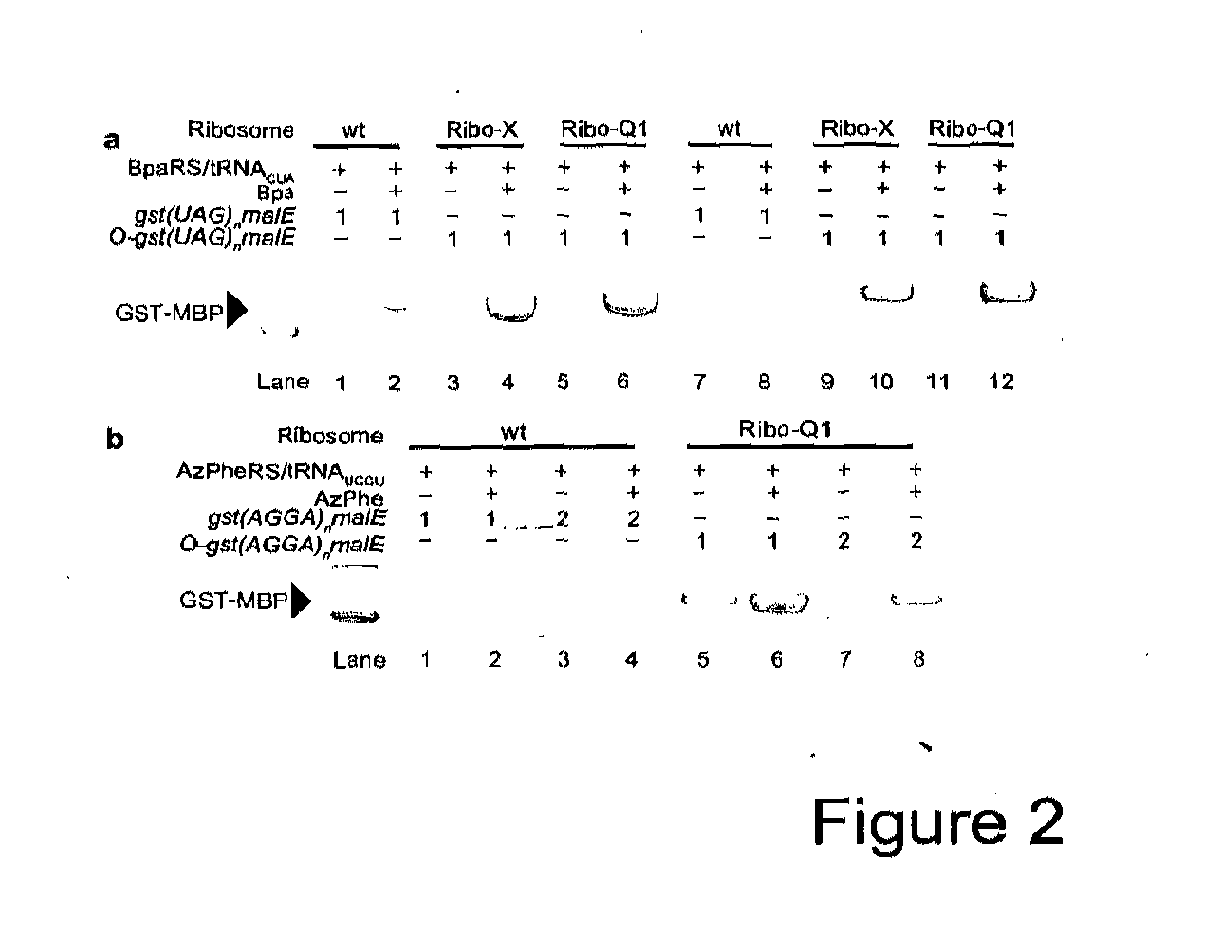Orthogonal Q-Ribosomes
- Summary
- Abstract
- Description
- Claims
- Application Information
AI Technical Summary
Benefits of technology
Problems solved by technology
Method used
Image
Examples
examples
Plasmid Construction
[0121]Previously described gst-MalE protein expression vectors pgst-malE and pO-gst-malE9, are translated by wild type and orthogonal ribosomes respectively. These vectors were used as templates to construct variants containing one or two quadruplet codons in the linker region between the gst and malE open reading frame.
[0122]To create vectors containing a single AGGA quadruplet codon between gst and malE (pgst(AGGA)malE and pO-gst(AGGA)malE) the Tyr codon, TAC, in the linker between gst and malE was changed to AGGA by Quikchange mutagenesis (Stratagene), using the primers GMx1AGGAf and GMx1AGGAr (all primers used in this study are listed in Supplementary Table 1). For double AGGA mutants we additionally mutated the fourth codon in malE from GAA to AGGA by quick change PCR, with the primers GMx2AGGAf and GMx2AGGAr to create the vectors pgst(AGGA)2malE and pO-gst(AGGA)2malE. The vector pO-gst-malE(Y252AGGA) used for protein expression for mass spectrometry, in whi...
PUM
| Property | Measurement | Unit |
|---|---|---|
| Electrical conductance | aaaaa | aaaaa |
Abstract
Description
Claims
Application Information
 Login to View More
Login to View More - R&D Engineer
- R&D Manager
- IP Professional
- Industry Leading Data Capabilities
- Powerful AI technology
- Patent DNA Extraction
Browse by: Latest US Patents, China's latest patents, Technical Efficacy Thesaurus, Application Domain, Technology Topic, Popular Technical Reports.
© 2024 PatSnap. All rights reserved.Legal|Privacy policy|Modern Slavery Act Transparency Statement|Sitemap|About US| Contact US: help@patsnap.com










